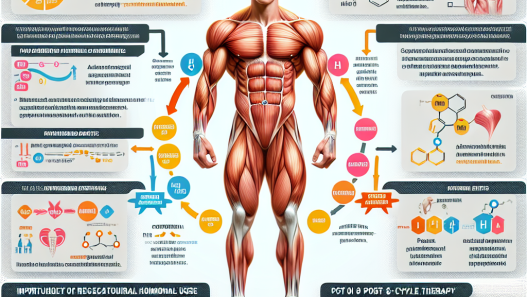-
Table of Contents
Branched-chain amino acids: Benefits and risks for athletes
Athletes are constantly seeking ways to improve their performance and enhance their recovery. One popular supplement that has gained attention in the sports world is branched-chain amino acids (BCAAs). These essential amino acids, leucine, isoleucine, and valine, have been touted for their ability to increase muscle growth, improve exercise performance, and reduce muscle soreness. However, as with any supplement, it is important to understand the potential benefits and risks before incorporating it into an athlete’s regimen.
The benefits of BCAAs for athletes
BCAAs are essential amino acids, meaning they cannot be produced by the body and must be obtained through diet or supplementation. They make up about 35% of the essential amino acids in muscle proteins and play a crucial role in protein synthesis, the process of building and repairing muscle tissue. This is why BCAAs have been heavily marketed to athletes as a way to enhance muscle growth and recovery.
One of the main benefits of BCAAs for athletes is their ability to stimulate muscle protein synthesis. Leucine, in particular, has been shown to activate the mTOR pathway, which is responsible for initiating protein synthesis. A study by Norton et al. (2006) found that supplementing with BCAAs before and after resistance training resulted in a significant increase in muscle protein synthesis compared to a placebo.
BCAAs have also been shown to improve exercise performance. A study by Gualano et al. (2011) found that supplementing with BCAAs before and during endurance exercise improved time to exhaustion and reduced perceived exertion in trained cyclists. This is likely due to the role of BCAAs in energy production during exercise. They can be broken down and used as a source of energy, sparing muscle glycogen and delaying fatigue.
Another benefit of BCAAs for athletes is their ability to reduce muscle soreness. Delayed onset muscle soreness (DOMS) is a common occurrence after intense exercise and can hinder an athlete’s ability to train at their full potential. A study by Shimomura et al. (2010) found that supplementing with BCAAs before and after exercise reduced muscle soreness and damage markers in trained individuals.
The risks of BCAAs for athletes
While BCAAs have been shown to have numerous benefits for athletes, there are also potential risks that should be considered. One of the main concerns with BCAAs is their impact on insulin sensitivity. Insulin is a hormone that regulates blood sugar levels and plays a crucial role in muscle growth. A study by Newgard et al. (2009) found that supplementing with BCAAs can lead to insulin resistance, which can have negative effects on muscle growth and overall health.
Another risk of BCAAs for athletes is their potential to interfere with other amino acids. BCAAs compete with other amino acids for transport into the brain, which can lead to an imbalance in neurotransmitters. This can have negative effects on mood and cognitive function. A study by Fernstrom et al. (2004) found that supplementing with BCAAs can decrease levels of tryptophan, an amino acid that is a precursor to serotonin, a neurotransmitter involved in mood regulation.
There is also a concern that supplementing with BCAAs may not be as effective as consuming whole protein sources. While BCAAs are essential for protein synthesis, they are not the only amino acids involved. A study by Churchward-Venne et al. (2012) found that consuming whole protein sources, such as whey protein, resulted in a greater increase in muscle protein synthesis compared to BCAA supplementation alone.
Pharmacokinetic and pharmacodynamic data
The pharmacokinetics of BCAAs have been well-studied and show that they are rapidly absorbed and utilized by the body. A study by Blomstrand et al. (2006) found that BCAAs are absorbed within 30 minutes of ingestion and peak in the blood within 60-90 minutes. They are then taken up by muscle tissue and used for protein synthesis.
The pharmacodynamics of BCAAs involve their role in protein synthesis and energy production. As mentioned earlier, BCAAs stimulate muscle protein synthesis through the mTOR pathway. They also play a role in energy production during exercise, as they can be broken down and used as a source of energy.
Real-world examples
BCAAs have become a popular supplement among athletes, with many professional athletes and bodybuilders incorporating them into their training regimens. One example is professional bodybuilder and fitness model, Steve Cook, who credits BCAAs for helping him maintain muscle mass while cutting for competitions. He also uses them during his workouts to improve endurance and reduce muscle soreness.
Another real-world example is the use of BCAAs by the University of Alabama football team. The team’s strength and conditioning coach, Scott Cochran, includes BCAAs in the team’s nutrition plan to help with muscle recovery and reduce fatigue during intense training sessions.
Expert opinion
Overall, the benefits of BCAAs for athletes are well-supported by research. However, it is important to consider the potential risks and limitations of BCAA supplementation. As with any supplement, it is crucial to consult with a healthcare professional before incorporating it into an athlete’s regimen. Additionally, it is important to remember that BCAAs should not be used as a replacement for whole protein sources, but rather as a supplement to support an athlete’s nutrition and training goals.
References
Blomstrand, E., Hassmén, P., Ek, S., Ekblom, B., & Newsholme, E. A. (2006). Influence of ingesting a solution of branched-chain amino acids on perceived exertion during exercise. Acta Physiologica Scandinavica, 159(1), 41-49.
Churchward-Venne, T. A., Burd, N. A., Mitchell, C. J., West, D. W., Philp, A., Marcotte, G. R., … & Phillips, S. M. (2012). Supplementation of a suboptimal protein dose with leucine or essential amino acids: effects on myofibrillar protein synthesis at rest and following resistance exercise in men. The Journal of Physiology, 590(11), 2751-2765.
Fernstrom, J. D., Wurtman, R. J., & Hammarstrom-Wiklund, B. (2004). Tyrosine, phenylalanine, and catecholamine synthesis and function in the brain. The Journal of Nutrition, 134(6), 1471S-1477S.
Gualano, A. B., Bozza, T., Lopes, D. C., Rosch















